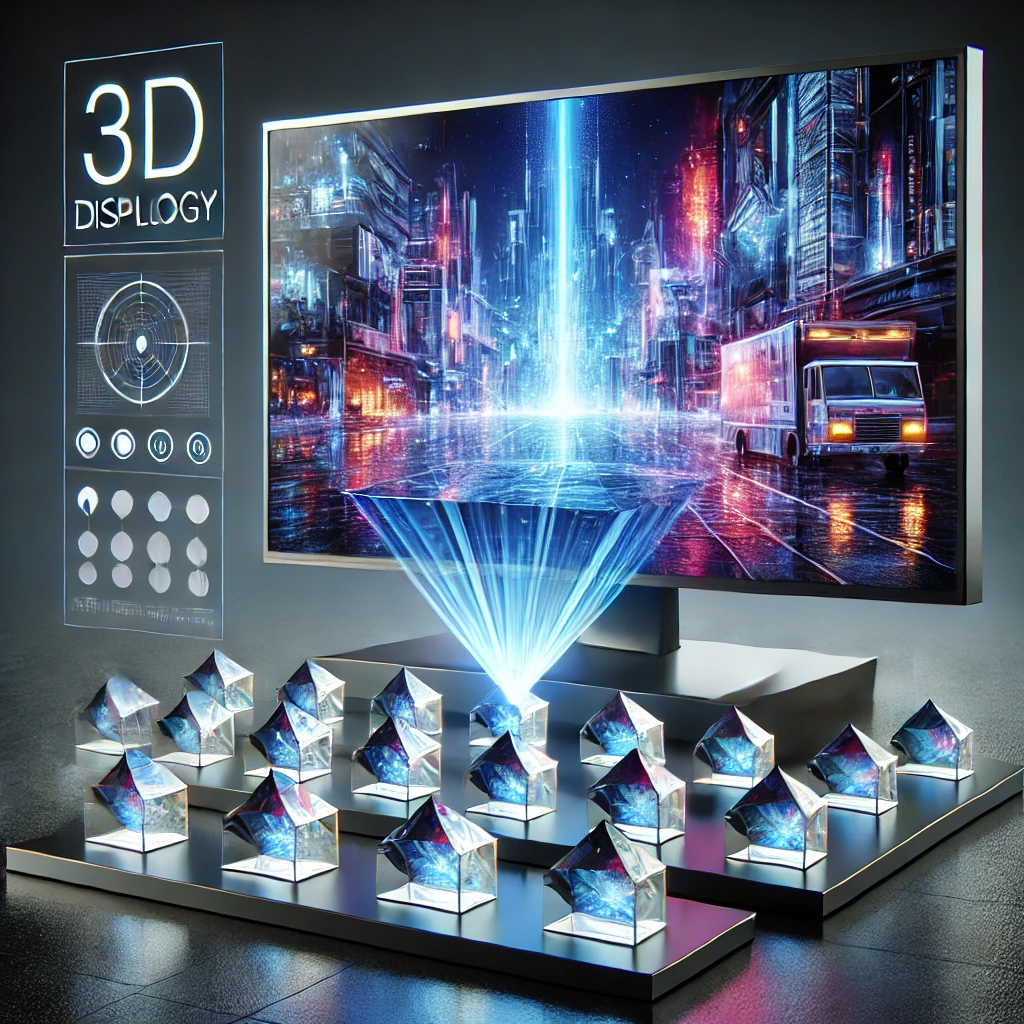This article describes Lucius Prism Array technology, which overcomes the limitations of traditional 3D glasses, explains how it enables glasses-free 3D imaging, and looks ahead to its potential applications in a variety of fields.
Do you remember the film Avatar, released in late 2009, which was widely acclaimed for its stunningly beautiful planet Pandora and its spectacular action in 3D (three-dimensional stereoscopic) visuals that made it seem like the action was happening right in front of you? At the time, 3D cinema was still considered a novelty, but since then, many films have been released in 3D, and recently, 3D TVs have become available to enjoy these films at home. 3D technology has quickly spread beyond the film industry to a wide range of entertainment and consumer electronics.
However, there are still some inconveniences to enjoying 3D videos. One of the most common is 3D glasses. If you watch the screen without 3D glasses, you’ll see a confusing image that looks like two different scenes mixed together. This inconvenience has been a barrier to the widespread adoption of 3D video. Furthermore, many people complained of eye strain when watching films with glasses for long periods of time. This has led to a surge in demand for new technologies that allow us to enjoy 3D films without glasses.
To understand this phenomenon, we must first understand how our eyes move when we look at near and far objects. For example, hold your finger in front of your nose and alternate between looking at a distant tree and your finger. When you look at the distant tree, your finger will appear as two fingers. This time, alternate between your right and left eyes, and you’ll notice that the position of the finger you see with your right eye is different from the position of the finger you see with your left eye. This phenomenon of seeing things differently in the right and left eyes is called binocular disparity. This binocular disparity gives us a sense of depth in three-dimensional space.
Until now, binocular parallax has been implemented on flat screens by using 3D glasses to represent the images received by the right and left eyes differently. There are a few drawbacks to using 3D glasses to create stereoscopic images. Firstly, the resolution and brightness are halved, and secondly, the need to wear glasses is cumbersome and adds to eye fatigue, which is exacerbated when watching films or TV for long periods of time.
To solve this problem, the Lucius Prism Array method has recently been developed, a technology that enables stereoscopic images without glasses. It is produced through a process called nano imprinting, which creates 3D images by arranging microscopic prism structures ranging in size from nanometres (nm) to micrometres (μm) on the screen. Nano imprinting is a technology that creates microscopic shapes by placing raw materials in a very small mould and hardening them with heat or ultraviolet light, much like making a batch of taiyaki bread. This enables the Lucius Prism Array method to provide stereoscopic imaging that is far more advanced than traditional 3D glasses.
The existing glasses-free 3D implementation technology, the Parallax Barrier method, which enables stereoscopic images without 3D glasses, has been used since the early days of 3D displays. It works by creating binocular parallax by placing countless opaque barriers vertically across the screen. When placed properly, the right and left eyes perceive different pixels, creating the illusion of depth. However, parallax barriers have some drawbacks. The screen is dark and the viewing angle is very narrow, so even the slightest change in viewing angle can cause the illusion of depth to disappear.

The Lucius prism array method overcomes these problems by using nanoimprinting to vertically arrange tens of micrometre-sized micro-prisms (triangular columns) of transparent polymeric material on the screen surface. The prisms are coated on one side with a light-reflecting material and can only emit light in one direction, either right or left, depending on which side is coated. The arrangement of these prisms controls the direction of the light and creates binocular parallax by showing different images from the right and left sides. This allows users to see stereoscopic images with their bare eyes without the need for 3D glasses.
The Lucius prism array method has several advantages over the parallax barrier method, which is the existing glasses-free 3D technology. For one thing, the screen remains bright and offers a wide field of view, allowing users to experience stereoscopic images from a variety of angles. It’s also less straining on the eyes, so you can watch for longer periods of time. Thanks to these advantages, the Lucius prism array method has become the next generation of 3D imaging technology.
In September 2011, a paper on the Lucius prism array method was published in Nature Communications, and it has attracted much attention as the next generation of 3D imaging technology. The current display is a small prototype, measuring 4×4 cm across, but the researchers believe it could be scaled up to the size of a TV screen within the next year. If the technology is commercialised and mass-producibility issues are resolved, it could be applied to mobile phones, tablet PCs, and 3D TVs, making it easy to enjoy 3D images anywhere.
Lucius Prism Array technology is not limited to the film industry. The technology has great potential in a variety of fields, including education, healthcare, advertising, and virtual reality (VR). For example, in the medical field, 3D anatomical models for pre-operative simulations can be more precise, and in the advertising industry, product advertisements can be much more lifelike than traditional 2D images. And by combining it with virtual reality, it can create a more immersive user experience.